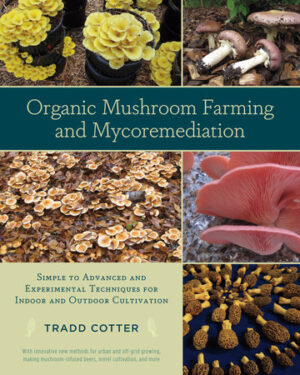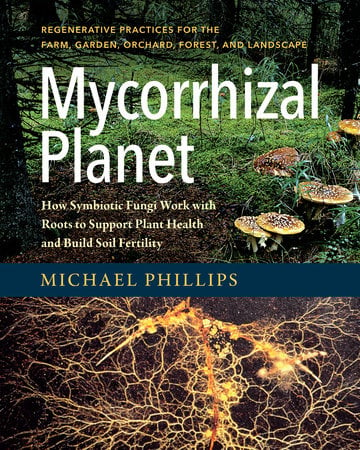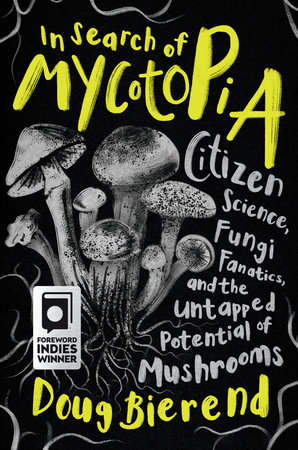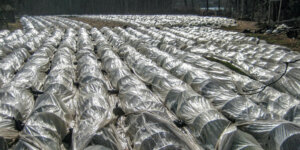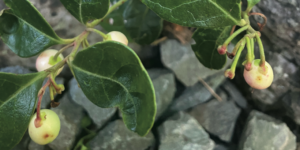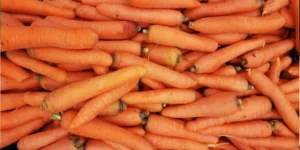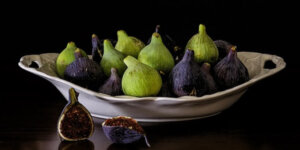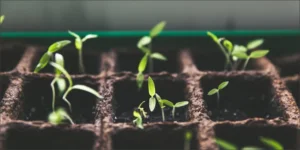Grow Mushrooms on Your Jeans. Seriously.
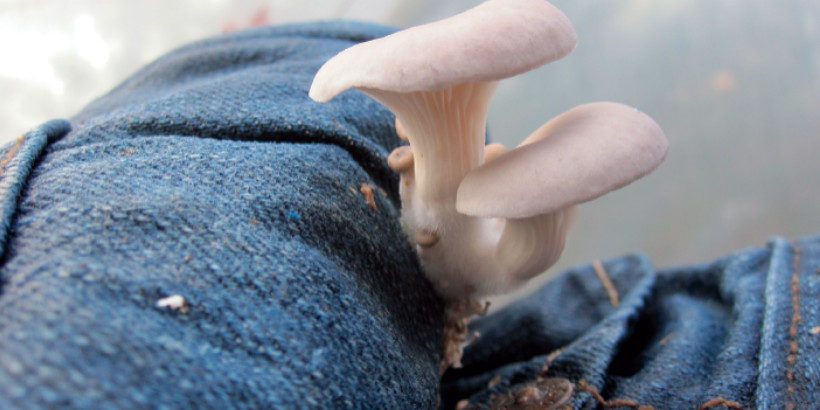
Do you have an old, worn-out pair of jeans in your dresser? Instead of throwing them out, try to grow mushrooms on them.
Follow this simple step-by-step outline to start growing mushrooms in the unlikeliest of places…on your pants!
The following is an excerpt from Organic Mushroom Farming and Mycoremediation by Tradd Cotter. It has been adapted for the web.
(Photographs courtesy of Tradd and Olga Cotter unless otherwise noted.)
How to Grow Mushrooms on Clothing
I started growing mushrooms on clothes when I first became interested in mycoremediation of waste dyes and pigments. There was a textile mill near our farm that manufactured denim for the production of jeans and other clothing. My wife Olga and I went to the mill one day and were greeted by a few friendly folks. I told them I was interested in remediating the indigo carmine they were allowed to release into the waterway based on EPA daily allowable standards.
They looked at me a bit nervously, as if I were a whistle-blowing undercover environmentalist; picking up on that, I quickly told them about my mycoremediation research and passions. The man I was speaking to happened to be the owner, and he was excited to hear about the prospect of lessening the mill’s environmental impact.
The Experiment: Growing Mushrooms on Clothes
The following week I decided to grow mushrooms on old jeans to see if they could decolorize the indigo carmine that makes them blue.
My first experiment was a success, with oyster mushrooms colonizing and fruiting very well on old cotton jeans, but the decolorization of the indigo carmine that I expected was not evident. Turkey tail mushrooms and a few other species are more efficient at the decolorization process, but what I learned is that old cotton clothing can support fruiting oyster mushrooms. (This could be potentially valuable survival information for anyone directly impacted by a natural disaster, where there is a huge amount of debris, but food is scarce.)
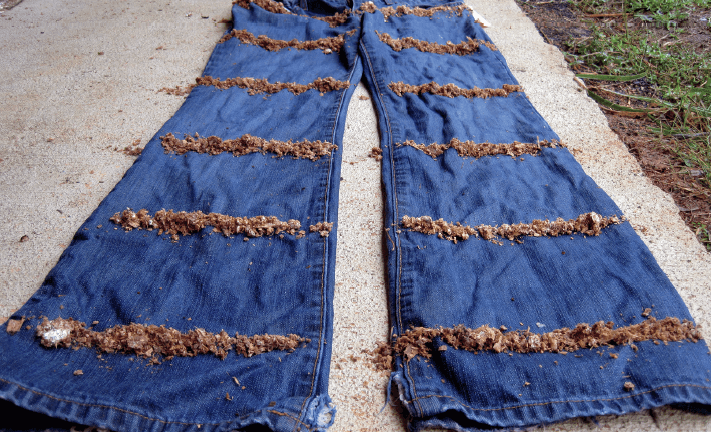
Spawning a pair of jeans. After inoculating the jeans with spawn, roll up each pant leg and let the pants sit for several weeks to allow the mycelium time to colonize.
Old cotton shirts, bits of rugs, hemp and sisal rope—any material composed of natural plant fibers, including cotton, hemp, and bamboo, can be used to cultivate mushrooms. It only needs water and a bit of oyster mushroom mycelium to get started.
Grow Mushrooms on Clothing in 6 Steps
- Soak the clothing in fresh water. The water does not have to be sterile or clean, only free of heavy metals.
- Flatten the clothing on a surface. Sprinkle the mushroom starter culture over the surface sparingly. Remember, more spawn will speed the process, not necessarily produce more mushrooms.
- Roll the clothing tightly, or if you have more than one article of clothing, stack it in spawned layers. Place the clothing in a plastic bag or an enclosed container with a few holes.
- Check the moisture content of the clothing every few days during colonization to make sure the fabric does not dry out; mist or water it as needed. Room temperature or cooler is perfectly fine for colonizing clothing scraps.
- When the entire mass of clothing seems to have been completely colonized by the mycelium, increase ventilation by adding more holes or cracking the lid of the container, but not enough that the clothing will quickly dry out. Keep the surfaces misted slightly to induce mushroom formation. The colonization process can vary from one to two weeks depending on how much spawn you use. At this point the mushrooms are not interested in fruiting so no light is needed to promote primordia formation.
- Once mushrooms begin to appear, which can occur a few days to weeks after colonization depending on temperatures and spawn amount used, they will double in size every day. Mist as frequently as needed to keep the mushrooms from drying out at a young state.
When the mushrooms stop growing, they are ready to harvest.
Recommended Reads
Drill, Plug, Wax, Wait: 6 Simple Steps to Growing Mushrooms Outdoors
Recent Articles
Want to grow year-round, but a greenhouse feels like a big investment? When it comes to cost and flexibility, low tunnels are the all-around winners.
Read MoreWintergreen is the stunning evergreen groundcover that’s a game-changer for your garden! It’s cherished for its aromatic leaves, vibrant fall color & bright berries.
Read MoreGrow winter carrots for a sweeter & more flavorful harvest! Ditch the bland, store-bought carrots this winter! Grow your own winter carrots for a sweeter and more flavorful twist 🥕🥕
Read MoreThe fig tree is more than just a fruit-bearing wonder. The complex nature of these trees is beyond fascinating. They are the ultimate ecosystem superheroes!
Read MoreSearching for the perfect book to give the homesteader in your life? We’ve got your go-to books for anyone interested in organic growing, permaculture, soil health, year-round growing & more! What’s their next great read?
Read More

